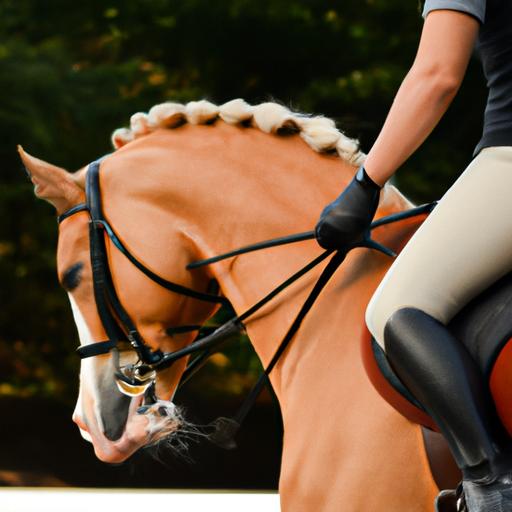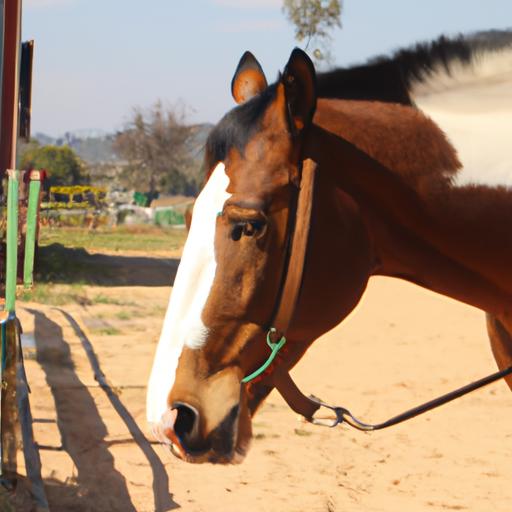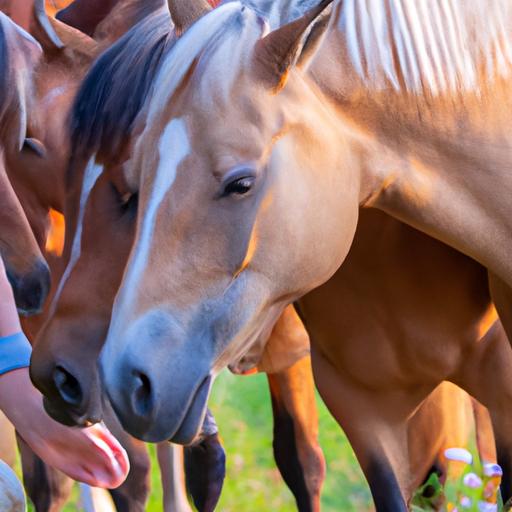Unlock the key to successful training and riding by correcting horse behavior. Learn how to prevent future issues through consistency, environment, nutrition, and health.
Introduction

As horse enthusiasts, we understand the joy and fulfillment that comes from working with these majestic creatures. However, we also know that horse behavior can sometimes present challenges during training and riding sessions. That’s where the importance of correcting horse behavior comes into play. By addressing these issues head-on, we can establish a harmonious partnership with our equine companions and unlock their true potential.
A. Importance of correcting horse behavior
Imagine trying to teach a horse advanced dressage movements when they constantly exhibit disobedience or aggression. It would be like trying to build a sturdy house on a shaky foundation. Correcting horse behavior is crucial because it lays the groundwork for successful training and riding experiences. By addressing behavioral issues, we create a solid foundation of trust, respect, and cooperation, allowing us to progress and achieve our goals.
B. Understanding the impact of horse behavior on training and riding
Horse behavior has a direct impact on the effectiveness of our training methods and the overall riding experience. When a horse displays behavioral issues such as bucking, biting, or refusing to respond to cues, it can hinder our ability to communicate effectively and compromise our safety. By understanding horse behavior and its influence on training and riding, we can tailor our approach to address specific issues and create a positive and productive partnership with our horses.
C. Overview of common horse behavior issues
Before we delve into the techniques for correcting horse behavior, let’s explore some of the common behavioral issues that horse owners encounter. From separation anxiety and herd-bound behaviors to spookiness and resistance, these challenges can arise from various factors such as fear, past experiences, or even underlying health issues. By identifying and understanding these issues, we can develop targeted strategies to address them effectively.
Now that we recognize the importance of correcting horse behavior and its impact on training and riding, it’s time to explore the techniques that will help us overcome these challenges. So, let’s saddle up and embark on this transformative journey together!
Understanding Horse Behavior

Horses are fascinating creatures with complex behaviors deeply rooted in their nature. To effectively correct their behavior, we must first gain a deeper understanding of their instincts, herd dynamics, and communication methods. By delving into these aspects, we can develop a stronger connection with our horses and address their behavior with empathy and knowledge.
A. Natural instincts and herd dynamics
Horses are prey animals with keen survival instincts. Understanding their natural instincts, such as flight response and herd mentality, is crucial in comprehending their behavior. Horses have evolved to be highly sensitive to their environment, constantly assessing potential threats. This instinctual awareness impacts how they respond to stimuli, making it essential for us to approach training and correction with patience and understanding.
Within a herd, horses establish a hierarchical order based on dominance and submission. This herd dynamics play a significant role in their behavior, as they seek safety and comfort in the herd’s structure. By recognizing and respecting these dynamics, we can better comprehend why our horses may exhibit certain behaviors and work towards establishing ourselves as trusted leaders within their herd.
B. Communication methods among horses
Horses rely on a complex system of non-verbal communication to interact with each other. They use body language, vocalizations, and subtle cues to convey their intentions and emotions. Understanding these communication methods allows us to effectively communicate with our horses and interpret their signals.
Observing our horse’s body language, such as ear position, tail swishing, and posture, can provide valuable insights into their mood and mindset. Additionally, we can learn from their vocalizations, such as neighs and whinnies, which serve as a means of expressing emotions and establishing social connections.
C. Factors influencing horse behavior
Several factors influence horse behavior, and recognizing them is essential in addressing and correcting behavioral issues. Past experiences, training methods, health conditions, and even the environment can shape a horse’s behavior. Traumatic incidents or improper handling can lead to fear or aggression, while physical discomfort or pain may manifest in resistance or disobedience.
By considering these factors, we can approach behavior correction holistically, taking into account the horse’s past, present circumstances, and overall well-being. This comprehensive understanding enables us to tailor our training methods and interventions to meet the specific needs of our horses.
Now that we’ve gained a deeper understanding of horse behavior, let’s explore effective techniques for correcting their behavior in the next section. By combining our knowledge with practical strategies, we can forge a stronger bond and unlock the true potential of our equine partners.
Recognizing Problematic Horse Behavior
A. Identifying signs of disobedience or aggression
When it comes to correcting horse behavior, the first step is recognizing the signs of disobedience or aggression. These behaviors can manifest in various ways, such as refusing to follow commands, bucking, rearing, kicking, biting, or even charging. It’s essential to pay close attention to your horse’s body language, as it often provides valuable insights into their state of mind. Signs of disobedience or aggression may include pinned ears, a raised tail, tense muscles, or a fixed stare. By staying vigilant and observant, you can quickly identify these behaviors and address them before they escalate.
B. Common behavioral issues in horses
Understanding the common behavioral issues that horses may exhibit is crucial for effectively correcting their behavior. Some of the most commonly encountered issues include:
-
Separation anxiety: Horses are herd animals, and being separated from their companions can lead to stress and anxious behaviors.
-
Herd-bound behavior: Horses may become overly attached to their herd mates, making it challenging to work with them individually.
-
Spookiness: Horses can be easily startled by unfamiliar objects, loud noises, or sudden movements, potentially leading to dangerous situations.
-
Resistance to cues: Some horses may show resistance to certain commands, such as refusing to move forward, backing up, or turning.
-
Bucking or rearing: These behaviors can be a result of frustration, fear, pain, or a combination of factors.
C. Differentiating between behavioral and health-related problems
It’s essential to differentiate between behavioral issues and health-related problems when addressing horse behavior. Some behaviors may be a result of underlying physical discomfort, such as saddle fit issues, dental problems, or pain in their joints or muscles. Consulting with a veterinarian and equine professionals can help rule out any potential health-related causes for the observed behaviors. By understanding the distinction between behavioral and health-related problems, we can ensure that we address the root cause and provide appropriate solutions for our horses. Remember, a holistic approach that considers both physical and behavioral aspects is crucial for correcting horse behavior effectively.
Effective Techniques for Correcting Horse Behavior
A. Establishing trust and respect through groundwork
Building a strong foundation of trust and respect is essential when correcting horse behavior. Groundwork serves as the bridge between human and horse, allowing us to establish clear communication and boundaries. By engaging in exercises such as leading, lunging, and desensitization, we can gain our horse’s trust and respect. Through consistent and patient interactions, we can create a solid bond that forms the basis for successful behavior correction.
B. Utilizing positive reinforcement training methods
Positive reinforcement is a powerful tool when it comes to correcting horse behavior. By rewarding desired behaviors with treats, praise, or even a simple pat, we encourage our horses to repeat those behaviors. This approach focuses on acknowledging and rewarding the horse’s efforts, reinforcing the positive aspects of their behavior. By utilizing positive reinforcement training methods, we can create a positive and cooperative learning environment, making behavior correction a more enjoyable experience for both horse and rider.
C. Addressing specific behavioral issues with targeted exercises
Each horse is unique, and their behavioral issues may vary. It’s important to address specific problems with targeted exercises tailored to the individual horse. For example, if a horse has a tendency to spook, desensitization exercises with various objects and sounds can help them become more confident and less reactive. By identifying the root causes of the behavioral issues and designing exercises to address them directly, we can effectively correct and modify unwanted behaviors.
D. Seeking professional help when necessary
While we can employ various techniques on our own, some behavioral issues may require professional intervention. If we find ourselves struggling to correct a particular behavior or if safety becomes a concern, seeking the guidance of an experienced trainer or behaviorist is crucial. These professionals have the expertise to identify the underlying causes, provide specialized training methods, and offer valuable insights to ensure the safety and well-being of both the horse and the rider. Remember, it’s okay to ask for help when needed.
By implementing these effective techniques for correcting horse behavior, we can create a harmonious partnership with our horses and overcome the challenges that come our way. With patience, consistency, and the right approach, we can transform our equine companions into willing and obedient partners. Remember, each step we take brings us closer to a stronger bond and a brighter future together.
Conclusion
In conclusion, correcting horse behavior is a vital aspect of establishing a positive and successful partnership with our equine companions. By understanding the importance of addressing behavioral issues, we can create a solid foundation for training and riding experiences that are both safe and fulfilling.
Throughout this article, we have explored the impact of horse behavior on training and riding, as well as common behavioral issues that may arise. We have also delved into effective techniques for correcting horse behavior, emphasizing the significance of trust, respect, and targeted exercises. By implementing these techniques, we can overcome challenges and guide our horses towards improved behavior.
However, it’s not just about correcting existing behavior problems. To prevent future issues from arising, we must focus on several key aspects. Consistency in training and handling is crucial for reinforcing desired behaviors and avoiding confusion. Creating a suitable environment for our horses, with ample space and appropriate socialization, can contribute to their overall well-being and behavior. Additionally, providing proper nutrition and exercise helps maintain a balanced and healthy mindset. Regular health check-ups and addressing any underlying medical issues are also essential for ensuring optimum behavior.
At Horsemasterypro.com, we are passionate about helping equestrians develop a deep understanding of their horses and create a harmonious partnership. By applying the techniques and strategies discussed in this article, you can embark on a transformative journey with your horse, unlocking their true potential and forging an unbreakable bond.
Remember, correcting horse behavior is an ongoing process that requires patience, consistency, and a willingness to adapt. With dedication and the right approach, you can overcome behavioral challenges and enjoy a rewarding partnership with your equine companion. So, let’s saddle up and embark on this incredible journey together!
Find your path to horsemanship mastery at Horsemasterypro.com.


